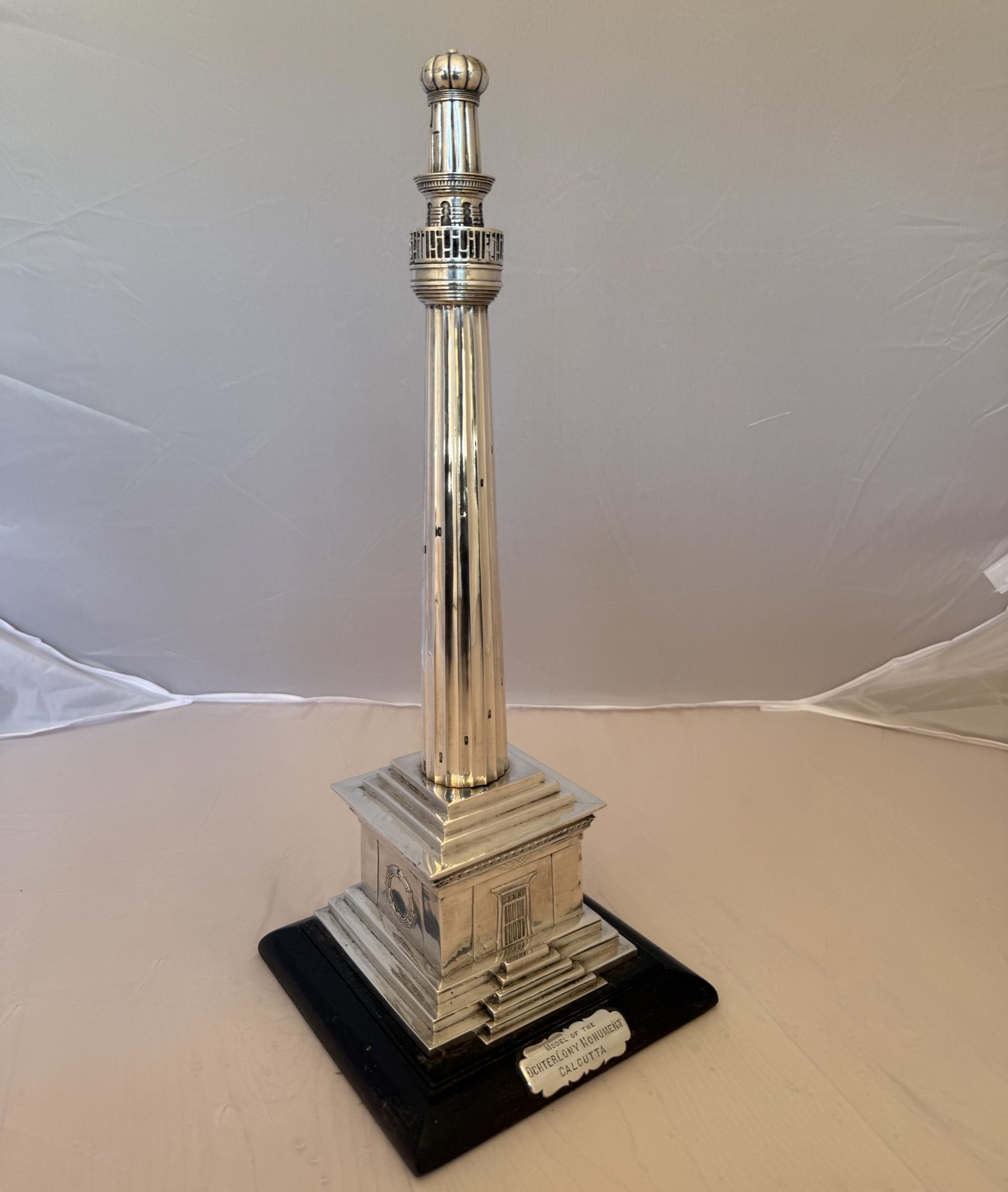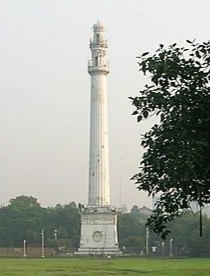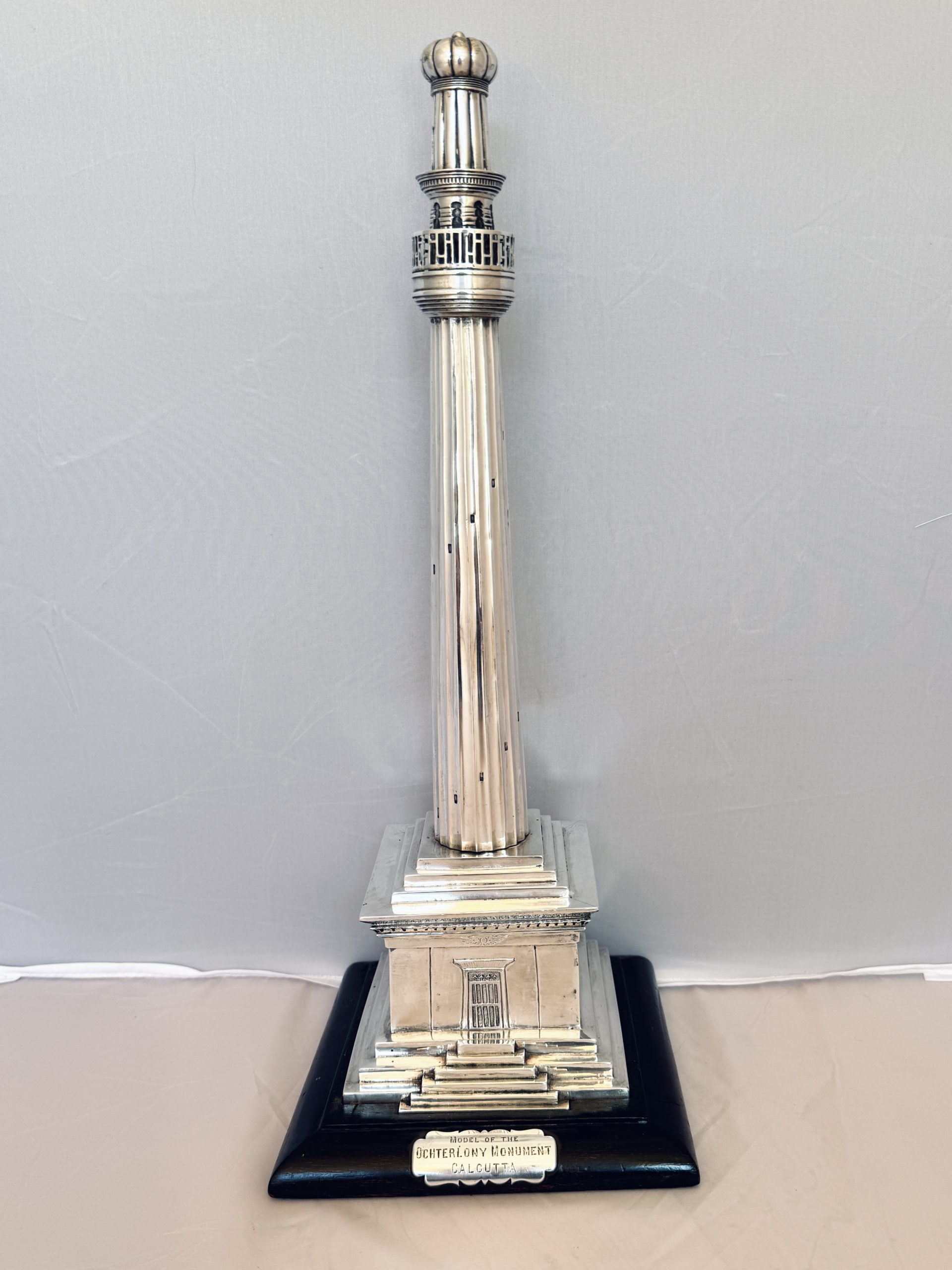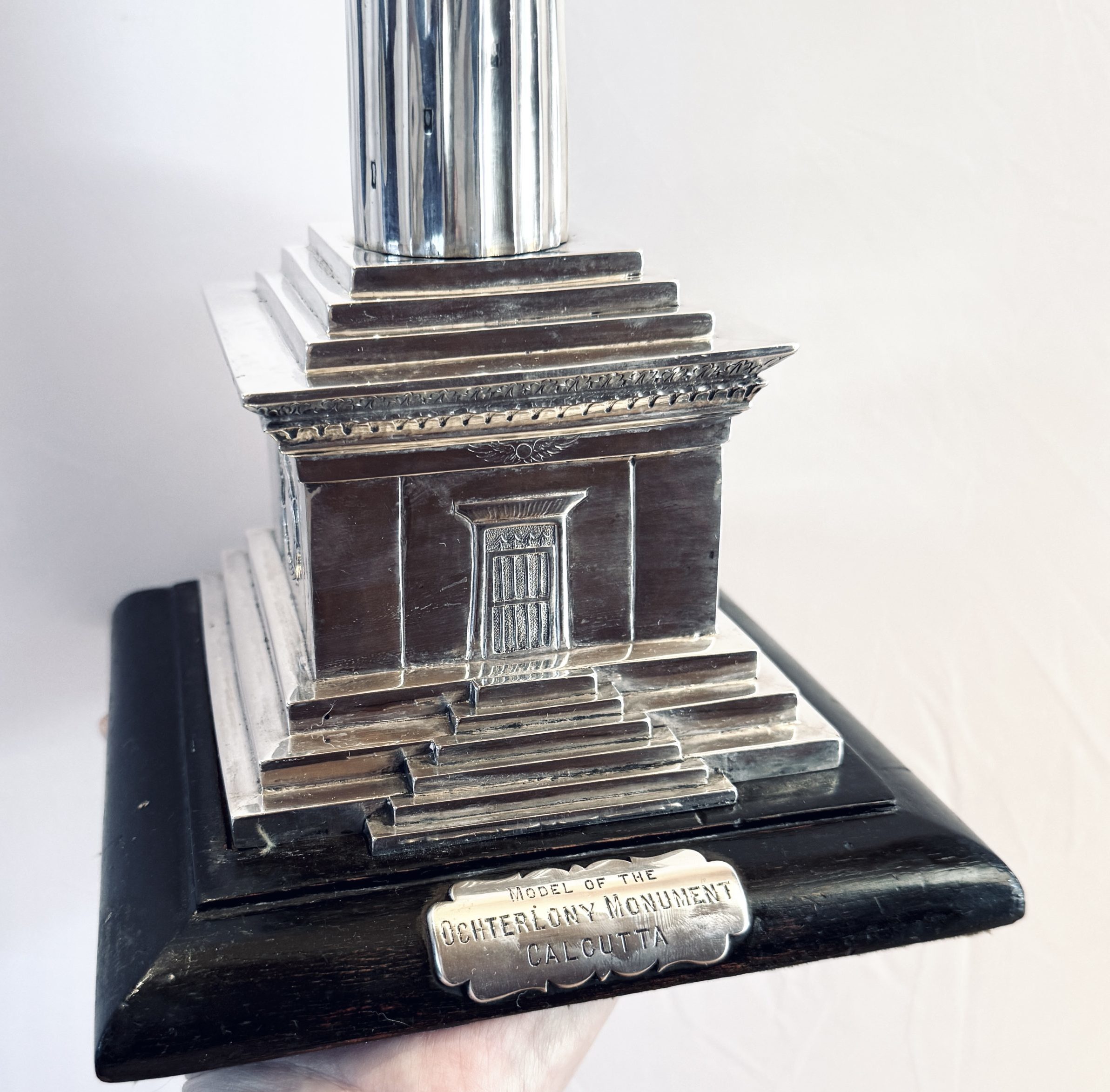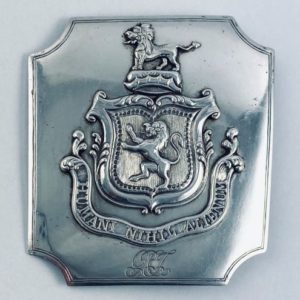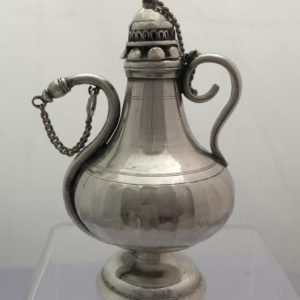Description
A model dating from the late nineteenth century, in sterling silver, of the “Ochterlony Monument” in Calcutta. The monument, which still exists in the Indian city of Kolkata, takes a columnar form on a stepped square base, with a gated entrance in the Egyptian style on one face and circular wreaths on the other three sides. Towards the top of the column are 2 balconies, the lower one fenced, just below a pumpkin-like cupola. The fluted column has windows illuminating an internal spiral staircase, represented on the model by small indentations. The model fits onto a recessed wooden stand fitted with baize and bearing an inscribed silver plaque identifying the monument.
Hallmarks:
There are no control marks apparent, but the silver has been tested and found to be of 0.925 (Sterling) standard or better.
Context:
The original stone monument in the Maidan area of central Kolkata has been known since 1969 as the Shaheed Minar, or Martyrs’ Monument. It was erected in 1828 in memory of Major General Sir David Ochterlony (1758-1825), a Bengal Army officer who served as British resident to the Mughal court at Delhi. Born in Boston, Massachusetts, of Scottish, English and Welsh descent, he spent most of his life on the Indian subcontinent in the service of the British East India Company, seeing action in numerous conflicts.
The monument commemorates both his successful defence of Delhi against the Marathas in 1804 and the victory of the East India Company’s armed forces over the Gurkhas in the Anglo-Nepalese War, also known as the Gurkha War.
In return for his services, he became a Knight Commander of the Bath, the first time the honour had been conferred on a British military officer in India, and was granted a baronetcy in November 1815. In December 1816, he was raised to Knight Grand Cross of the Order of the Bath.
The monument was designed by J. P. Parker, erected by Burns & Company, and paid for from public funds. Known as the “Cloud kissing Monument” by Mark Twain, the tower is 48 metres (157 ft) high. While the foundation is based on the Egyptian style, the column has a combination of styles with a classical fluted lower section, a Syrian upper portion, and a Turkish dome. It has two balconies near the top and the top floor is accessible by a serpentine staircase with more than 200 steps.
Dimensions and Weight:
Column height: 41 cm / 16 1/8 ins.; Base: 10.5 cm / 4 ½ ins. square; Weight: 996 gms / 32 ozT.

